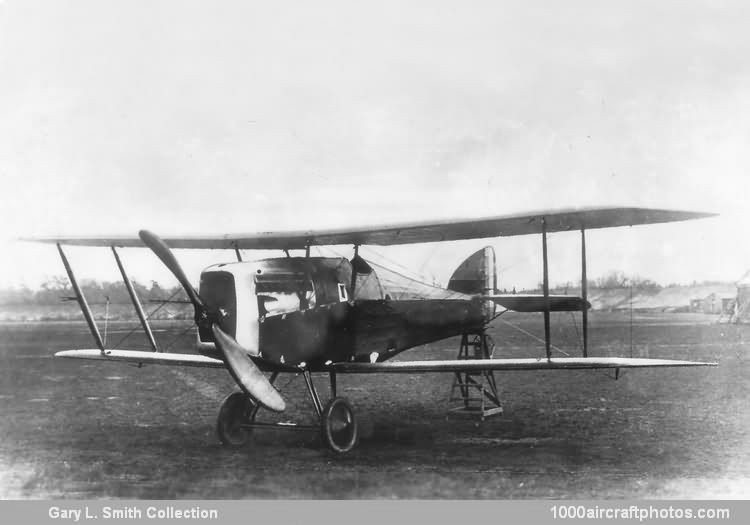The F.3 was powered by the Falcon engine, but priorities enjoyed by the Bristol Fighter in Falcon engine supplies led to the reworking of the fighter for the 300 hp Hispano-Suiza 8Fb with which it was redesignated F.4 and (from September 1918) officially named Buzzard. It is uncertain as to how many of the original batch of 150 aircraft were completed as Falcon-engined F.3s, but the bulk was certainly finished as HS 8Fb-engined F.4s, the first of the latter being tested at Martlesham Heath in June 1918.
Additional contracts for the F.4 were placed with the parent company (300), Boulton & Paul (500), Hooper (200) and Standard Motor (300). Armed with two synchronized 0.303 in (7.7 mm) Vickers guns, the F.4 differed from the F.3, apart from power plant, in having revised fuselage decking contours and more extensive plywood skinning. Belated engine deliveries and other factors delayed production, only seven having been handed over by November 1918, and, in the event, no RAF squadron was to be equipped with this type.
Production of the F.4 by the parent company continued for a time after the Armistice (no other contractor apparently producing any complete Buzzards) and more than 370 airframes were built, some being fitted with Falcon engines. A number of F.4 Buzzards were sold abroad by the ADC, the principal recipients being Finland (15), Portugal (4), Spain (20) and the USSR, the last-mentioned procuring 100 aircraft of this type.
A two-seat variant, the F.4A, was produced in 1920, a much-modified derivative with two-bay wings of increased span appearing in the following year. This had a Lewis gun in the rear cockpit and several were supplied to Spain in June 1921, both single- and two-seat Buzzards being referred to as F.4As in Spanish service. The following data relate to the standard F.4 Buzzard."
